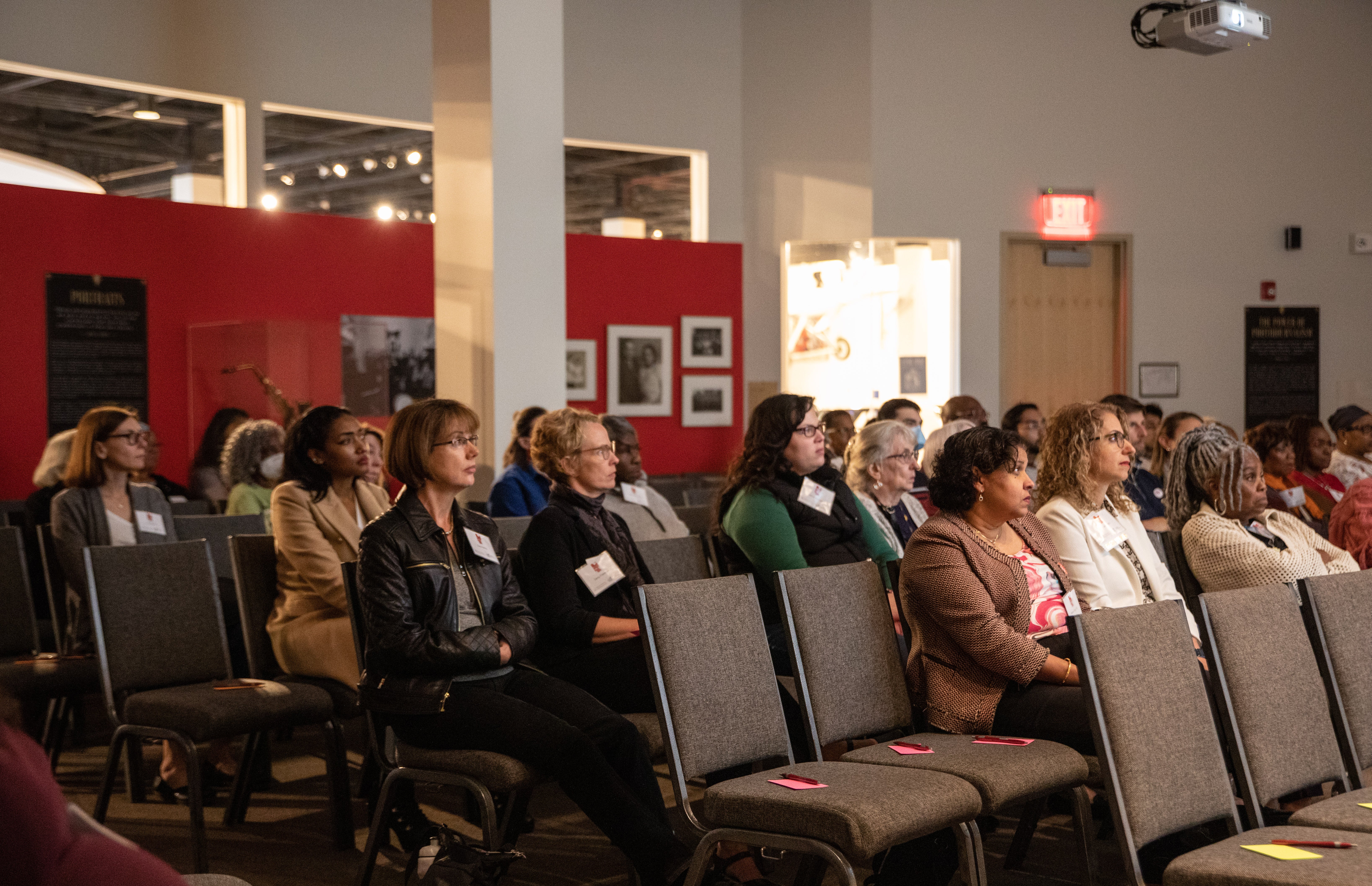Systemic Racism in Healthcare to Meet its Match with Interdisciplinary Health Equity Champions–Local and Abroad
This article is a part of our CTSC Event Recap series.
On Saturday, September 24, 2022, 45 health equity champions from across Northeast Ohio convened at the Cleveland History Center to watch The Color of Care documentary and participate in an interactive panel discussion featuring: Drs. Debora Bruno (University Hospitals), Lara Jehi (Cleveland Clinic) and Mamta (Mimi) Singh (Louis Stokes Veterans Administration Cleveland Medical Center).
The Western Reserve Historical Society, a Smithsonian Affiliate, partnered with the Clinical and Translational Collaborative of Cleveland (CTSC) to co-host the event, made possible by the Smithsonian Channel. The Color of Care is a documentary that provides firsthand and historical accounts demonstrating how racism permeates healthcare in America and perpetuates the existence of health disparities–using the COVID-19 pandemic as an example of systemic negligence that costs lives.
“In the healthcare system, what is changing is that we need to be culturally humble. We need to speak less, listen more, ask more questions, understand what patients and families bring with them when you work with them in order to establish effective communication,” Dr. Bruno explained.
Most attendees work in healthcare at one of our local healthcare institutions or academia while others were representatives from foundations or the community. The passion for eliminating health disparities was palpable during lunch conversations in a rotunda surrounded by a motorcycle exhibit with a view of the Euclid Beach carousel.
The Color of Care acknowledges key points that paint the current picture of health equity in America. Throughout the film, viewers learned about examples of how zip code determines life expectancy–illustrating the connection between systemic inequity and environmental injustice (read Where you live determines how long you live for local context).
“We’re moving away from the thought that disease is a product of biology. The social determinants of health play a very important role in determining our health.” Dr. Bruno said.
Another piece of food for thought is that, “All of our math…how we predict how people are going to do…are based on the past. And if the past circumstances are based on racism or things that are not right or things that could be improved, what we end up doing with those algorithms is perpetuating those differences.” This statement, from a clinical expert, in the film explains the gravity of responsibility that the biomedical research industry has in helping to eradicate current practices, through health equity research, with limited to no scientific basis and disproportionate negative impact on health outcomes for racial and ethnic minorities.
“Race is a social construct. There shouldn’t be that much of a difference […] when 99.9% of the genome is the same. Why are we thinking about things differently in terms of treatment?” Dr. Singh declared. She added, “The students are the ones who will come back after watching something like this and say, ‘Wait a minute, why is this the way it is? Why am I calculating this GFR [glomerular filtration rate - a blood test that checks how well your kidneys are working] the way I’m calculating it? Biologically there is no difference. […] We, as researchers and scientists, better have an answer.”
A recent example of a local physician doing the work comes from UH Harrington Heart & Vascular Institute physician, Dr. Sadeer Al-Kindi. Dr. Al-Kindi who found that there is a link between 1930s redlining and an increase in contemporary cardiometabolic health risk factors, including heart disease, kidney failure, and diabetes (read the article in full HERE).
Question topics from audience members ranged from required training and best ways to engage students (at all levels) to understand the importance of trust, empathy, lived experience, cultural humility, and relationships to patient self-advocacy (e.g., what to do if you believe you’ve been discriminated against or otherwise mistreated in a healthcare setting).
“All folks need to work together without any one of us thinking we know more than another. Documentaries like this are starting the conversation,” Dr. Jehi proclaimed.
Interested in viewing the film? Cleveland Clinic, Louis Stokes Veterans Administration Cleveland Medical Center, and University Hospitals are expected to host institutional virtual screenings before the end of the year.
Other Ways to Watch
- Amazon Prime Video ($1.99)
- YouTube ($1.99)
- Create a free account on www.SmithsonianChannel.com





